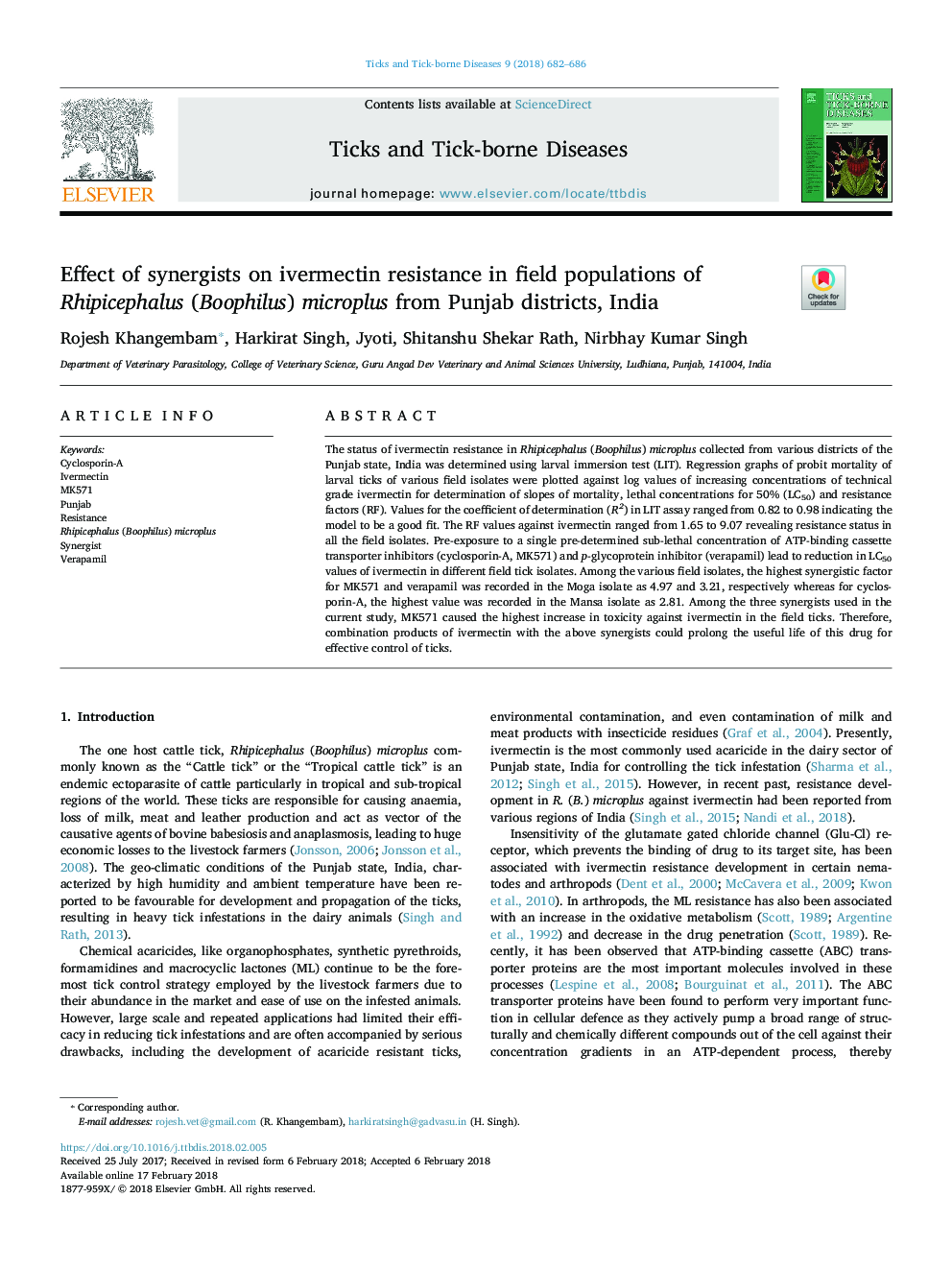| Article ID | Journal | Published Year | Pages | File Type |
|---|---|---|---|---|
| 8507328 | Ticks and Tick-borne Diseases | 2018 | 5 Pages |
Abstract
The status of ivermectin resistance in Rhipicephalus (Boophilus) microplus collected from various districts of the Punjab state, India was determined using larval immersion test (LIT). Regression graphs of probit mortality of larval ticks of various field isolates were plotted against log values of increasing concentrations of technical grade ivermectin for determination of slopes of mortality, lethal concentrations for 50% (LC50) and resistance factors (RF). Values for the coefficient of determination (R2) in LIT assay ranged from 0.82 to 0.98 indicating the model to be a good fit. The RF values against ivermectin ranged from 1.65 to 9.07 revealing resistance status in all the field isolates. Pre-exposure to a single pre-determined sub-lethal concentration of ATP-binding cassette transporter inhibitors (cyclosporin-A, MK571) and p-glycoprotein inhibitor (verapamil) lead to reduction in LC50 values of ivermectin in different field tick isolates. Among the various field isolates, the highest synergistic factor for MK571 and verapamil was recorded in the Moga isolate as 4.97 and 3.21, respectively whereas for cyclosporin-A, the highest value was recorded in the Mansa isolate as 2.81. Among the three synergists used in the current study, MK571 caused the highest increase in toxicity against ivermectin in the field ticks. Therefore, combination products of ivermectin with the above synergists could prolong the useful life of this drug for effective control of ticks.
Keywords
Related Topics
Life Sciences
Agricultural and Biological Sciences
Animal Science and Zoology
Authors
Rojesh Khangembam, Harkirat Singh, Jyoti Jyoti, Shitanshu Shekar Rath, Nirbhay Kumar Singh,
